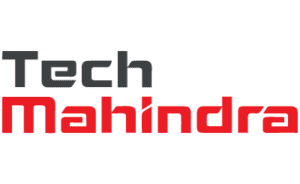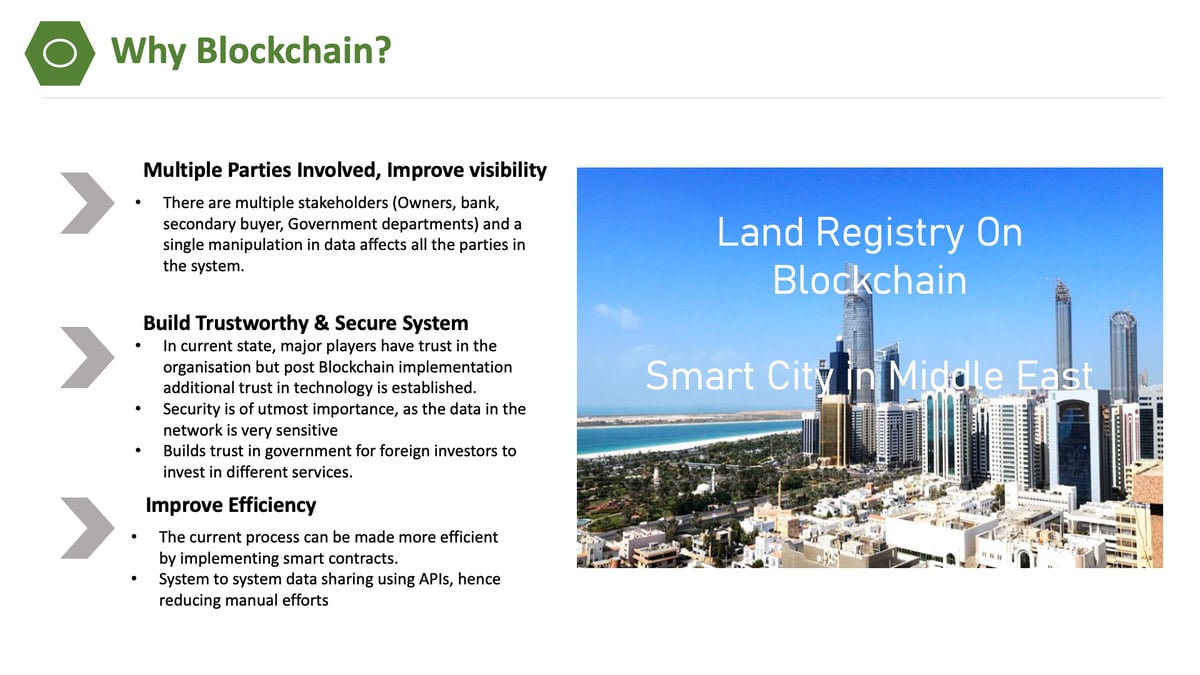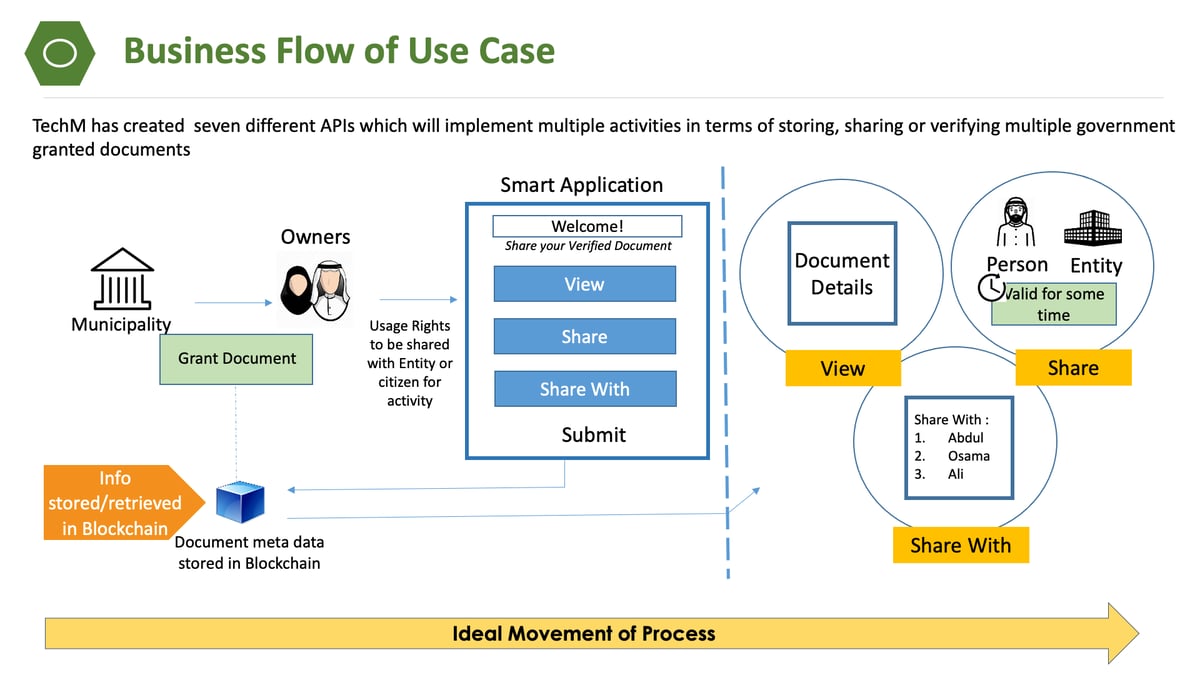How Tech Mahindra Deployed Hyperledger Fabric for the Digital Transformation of Abu Dhabi’s Land Registry

Abu Dhabi is one of the richest cities in the world, boasting modern architectural wonders from the first circular skyscraper to the dramatic Etihad towers to the world’s farthest leaning tower. When it comes to managing the land deeds for the 375 sq. miles on which the modern cityscape is built, there is a scope to digitize them and share these records with the citizens and other stakeholders using cutting-edge technology.
Starting from selling a piece of land to constructing a building or residential complex to selling the units to managing tenancy, there are a multitude of steps involved in creating a land deed record and the process can span up to six years to complete.
“Unfortunately, all of this is not documented properly,” says Amey Rajput, General Manager of the Blockchain Public Sector and Supply Chain Practice at Tech Mahindra, the leading provider of digital transformation consulting and business reengineering services and solutions based in Pune, India. “The Department of Urban Planning & Municipalities [DPM] had given the Abu Dhabi City Municipality [ADM] a road map of what they wanted to adopt in the future to digitize their organization and one of the use cases was a land registry.”
With its experience in building enhanced blockchain-based, customer-centric systems within its public sector practice, Tech Mahindra was tapped to bring the city’s paper-based real estate records into the modern era.
“A team from Tech Mahindra travelled to the capital of the United Arab Emirates at the end of 2019 to figure out the gaps and opportunities in their processes,” says Rajput. What they learned was that there were multiple external stakeholders and internal municipal departments coming together at any given stage of the land deed process, and they all leveraged disparate systems and applications.
After two months, the team proposed a streamlined blockchain-based system that eliminated the friction of document sharing. “Our solution gets all the stakeholders within an ecosystem together, where you can digitally share or view your deed with other companies and agencies or other citizens as well,” says Rajput.
“The value for distributed and decentralized architecture has grown exponentially in the public sector. The Abu Dhabi Municipality is a great example of how forward-looking public-sector leaders enabled the Smart Hub digital transformation with a distributed network to build ‘trust through transparency and authenticity.”
Secure, Safe, and Truthful
To create an end-to-end solution that utilizes automated transactions for sharing and viewing deeds, the Tech Mahindra team knew blockchain technology would play a major role in Abu Dhabi’s digital transformation. “We didn’t want to push blockchain just for the sake of technology,” says Rajput. “Instead, we always try to understand where blockchain can bring the maximum value.”
A single piece of property brings together multiple parties such as owners, banks, secondary buyers, and government departments, all of whom depend on access to the same land documents that they then edit, expand on, and evolve into a complete real estate record. One single change in data can cause a chain reaction of updates, not to mention unintentional errors or confusion among the stakeholders in the current paper-based ecosystem.
“With blockchain we can onboard all these parties on a single system, and all the transactions can be verified providing a single source of truth,” says Rajput. “We also wanted to improve the efficiency with an automated and streamlined structure. There should not be any gaps or hindrances.”
Stakeholders can trust that they are working with the most current and validated information because of blockchain’s smart contracts and immutable records, which also eliminate the susceptibility to lost or stolen documents or fraud.
“Since it’s a government organization, security is of the utmost importance,” says Rajput. “The data is the citizens’ data. The land registry system tracks their names, phone numbers, and addresses. There is a high level of sensitivity. Hence, we chose blockchain technology to provide us with end-to-end security of data in transit and in rest.”
Additionally, the possibility of human error is no longer a concern in this new paperless solution because individuals and organizations don’t have to keep referring to hard copies or rely on manual efforts to process each transaction related to a property.
“The land registry should not be human dependent; everything should be touchless, and people should have trust in the predictable technology — even more than they have in the organization,” says Rajput.
The trust that’s inherent in blockchain then creates a desired halo effect for the city government as foreign investors flock to Abu Dhabi for different services.
“The top reason why government organizations focus on enhanced transparency and efficiency is to attract foreign investment,” says Aman Malhotra, General Manager for Blockchain Platforms and Alliances at Tech Mahindra. “The Abu Dhabi Municipality already has great systems in place; however, there could be breakage or data leakage through the external stakeholders. This is an area where a blockchain-based solution can help government organizations by bringing in additional layers of transparency and providing the necessary confidence to potential buyers to go ahead with their investment decisions.”
With the help of Smart Dubai, the government organization facilitating Dubai’s citywide smart transformation, and the Dubai Future Foundation, a government organization focused on blockchain, Tech Mahindra compared various distributed ledger technologies that could scale to match the multi-tenant and growing needs of the ADM’s complex land registry. In the end, the team selected Hyperledger Fabric — an open-source modular blockchain platform hosted by the Linux Foundation.
Hyperledger Fabric also has a suite of tools to assuage the ADM’s concern around privacy. While all members on the blockchain can interact with one another and access the same documents on the ledger, each member can establish a separate, private relationship with another in-network entity and maintain transactional isolation through the channels feature.
If a bank is negotiating a loan with a real estate developer, the details of their smart contract will not be available to the entire network, but the validity of their transaction is ensured on the blockchain. “We created multiple channels between the member organizations, and Abu Dhabi is part of all the channels which enabled them to oversee the adoption of the new technology and ensured that the citizens’ private information is safeguarded,” says Prasad. “We wanted to provide a complete, secure, safe, and transparent environment for all these parties.”
Within this permission-based blockchain platform, the ADM maintained the governance and defined the rules for joining the network while Tech Mahindra’s team maintained the back-end operations. As part of providing full-time support to ADM, Tech Mahindra also engaged with Hyperledger Fabric’s active open source community.
“We were inclined towards adopting open source technology,” says Prasad, who has been a Hyperledger Fabric expert for almost four years. “With open source, we have great features and functionalities that get released every quarter. If we want to develop anything from the client perspective and require modifications to the framework, we can do that. That’s what is really great about working with the Hyperledger Fabric — the active community support.”

Moved to Tiers
Luckily the ADM already had a solid foundation for the front end. The municipality had developed a web-based application called Smart Hub that allows the city’s citizens to electronically perform various municipal activities such as reserving a spot in a parking lot, acquiring permits to public spaces for gatherings, or paying bills. Smart Hub eliminated the need to educate and onboard the public on a new platform and allowed Tech Mahindra to put more attention towards the back-end infrastructure.
“We developed the nodes so that there is a complete blockchain layer on Smart Hub and through that you can connect multiple agencies or government entities,” says Rajput. “Now whenever a land deed is generated by the municipality, it is automatically sent in a digital format on Smart Hub and its metadata is stored on the blockchain.”
The team then expanded on Smart Hub’s UI to create an experience that will feel familiar and easy for end citizens to access their land deeds and perform related operations on the registry.
In the pilot phase of the project, two entities were onboarded: the ADM and Aldar Properties, the leading real estate developer in Abu Dhabi and one of the most well-known names in the United Arab Emirates and wider Middle East region. Through Smart Hub, Tech Mahindra developed the following three functions for users:
- View a land deed: Citizens can review information or completed documents related to their land deed, and they can trust the data to be authentic. On Smart Hub, you cannot manipulate, cheat, or use Photoshop in the document. In short, you cannot use those documents for illegal purposes.
- Share a land deed: This function allows property owners to grant access to documentation to an entity or individual for a limited time in order to complete certain jobs, such as re-negotiating a loan or obtaining permission to work on site. The time-sensitive access can be given to multiple entities or government agencies, and once the designated time frame expires, the app automatically revokes access.
- Review the audit trail: Under the Share With option on Smart Hub, owners can see how many times a document was used and for what purposes, and subsequent owners will also have complete transparency into the history of the property. You can also see if the apartment is still under mortgage or if there is another loan which is taken against the deed.
On the back end, these functions require seven different APIs developed on node.js to allow for data to be properly sorted, accessed, and stored. The entire network is deployed on Smart Hub’s existing multi-tier architecture which consists of a web tier, an application tier, and database tier.
Within the application layer, engineers deployed two peers for ADM for high availability and an orderer, and they implemented Raft as the consensus algorithm for the app’s orderer cluster. For the database tier, there is a peer and orderer as well; however, for the pilot, all the orderers are hosted by the ADM to allow the municipality to insert data into the blockchain and therefore maintain control of the land registry. (Aldar Properties does not have the same access)
While the respective nodes for ADM and Aldar Properties are on premises, all of them are maintained by Tech Mahindra. The one area of uncertainty about the application’s new blockchain infrastructure arose while discussing how to onboard third-party organizations into the new ecosystem while protecting the government’s data and servers.
“Even though the application and database tiers are private, they have to expose their server IP address and ports to organizations outside of their network environment to implement blockchain” says Prasad. “Initially they resisted doing that; however, we provided a solution where the ADM didn’t need to expose their internal IP addresses.”
A load balancing service was added to the architecture that supplied a public IP that would be shared between organizations and the municipality. “Only that public IP will be open to the other organizations to join, and it will connect internally to the system’s order IP address,” says Prasad. “That was one more layer of security added to their tier-based environment.”

Citizens First
“In the end, the number of smart contracts the land registry can produce was not a metric of success for the ADM. The focus was more on the customer experience and less on the technology,” says Malhotra.
“The municipality wanted to implement it so that citizens do not have to come to the municipality and stand in queues for work they wanted to do, such as paying a bill or document verification,” says Rajput. “Now everybody can accomplish all the activities for which they would normally come to the ADM with just a click of a button.”
In the next phase, the future focus will be onboarding a wide variety of government and non-government entities, such as banks. Another goal is to develop a personal identification verification process that uses smart contracts versus physical ID cards.
Finally, the road map for the land registry includes capturing the land registration process. There are a lot of 2D drawings which come from the developer, and multiple iterations and approvals are needed to even construct a building. Tech Mahindra wants to capture that end-to-end process on the blockchain.
Ultimately, Tech Mahindra hopes to expand the scope of the solution to become a seamless all-in-one application that all 1.45 million citizens of Abu Dhabi can trust to share their information and leverage across different industries.
“The blockchain program for the land registry demonstrates the progressive nature of the Abu Dhabi government. Tech Mahindra is committed to enabling its customers through its digital transformation roadmap as well as building and delivering cutting-edge technology solutions and services that address real world problems and meet customer’s evolving and dynamic needs.”
About Tech Mahindra
Tech Mahindra offers innovative and customer-centric digital experiences, enabling enterprises, associates and the society to Rise™. We are a USD 5.2 billion organization with 121,900+ professionals across 90 countries helping 997 global customers, including Fortune 500 companies. We are focused on leveraging next-generation technologies including 5G, Blockchain, Cybersecurity, Artificial Intelligence, and more to enable end-to-end digital transformation for global customers. Tech Mahindra is one of the fastest growing brands and amongst the top 15 IT service providers globally. Tech Mahindra has consistently emerged as a leader in sustainability and is recognized among the 2021 Global 100 Most Sustainable Corporations in the World by Corporate Knights. With the NXT.NOW framework, Tech Mahindra aims to enhance ‘Human Centric Experience’ for our ecosystem and drive collaborative disruption with synergies arising from a robust portfolio of companies. We aim at delivering tomorrow’s experiences today and believe that the “Future is Now.”
We are part of the Mahindra Group, a USD 19.4 billion federation of companies that enables people to rise through innovative mobility solutions, driving rural prosperity, enhancing urban living, nurturing new businesses, and fostering communities. It enjoys a leadership position in utility vehicles, information technology, financial services, and vacation ownership in India and is the world’s largest tractor company by volume. It also enjoys a strong presence in renewable energy, agribusiness, logistics, and real estate development. Headquartered in India, Mahindra employs over 125,236 people across 100 countries.

About Abu Dhabi City Municipality
The Abu Dhabi City Municipality has, since its inception, developed a number of key objectives, notably the implementation of projects aimed at establishing modern infrastructure for the city including bridges, drainage systems, road networks, modern means of transportation, consolidation of comprehensive development projects.
In line with the policies of the government which aim at making Abu Dhabi a modern capital city, it is the Abu Dhabi City Municipality’s priority to create an ideal living environment for city residents, with unmatched quality of life and modern amenities.

About Hyperledger
Hyperledger is an open source collaborative effort created to advance cross-industry blockchain technologies. It is a global collaboration including leaders in banking, finance, Internet of Things, manufacturing, supply chain, and technology. The Linux Foundation hosts Hyperledger under the foundation. To learn more, visithttps://www.hyperledger.org/
Sign up for Hyperledger Horizon & /dev/weekly newsletters
By signing up, you acknowledge that your information is subject to The Linux Foundation's Privacy Policy